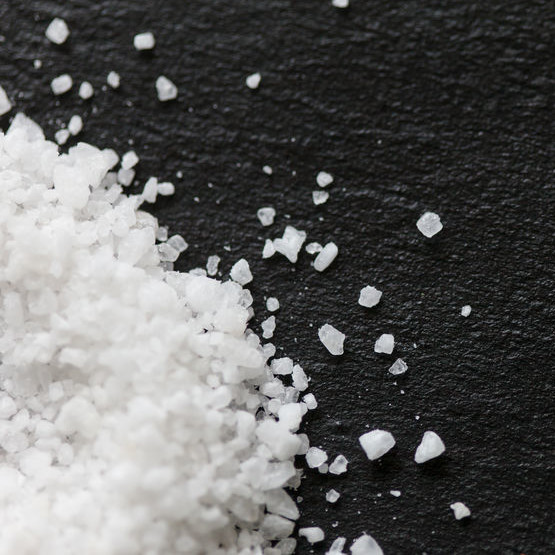
Sodium Reduction
Also Known as Sodium Replacement
What is Sodium Reduction?
Sodium reduction indicates that a food product has been formulated to contain 140 mg or less of sodium per serving.
- Bakery goods make up around 40% of sodium intake in the average diet.1
- A diet with high levels of sodium can cause ailments such as high blood pressure or heart disease.
- Therefore, sodium reduction is likely to benefit human health.
Origin
Since the 1970s, Americans have been consuming too much sodium. Current consumer demands for healthier foods have led the industry to adopt various approaches to reducing sodium. This can be achieved by lowering the levels of sodium salt in processed foods. Or, by using alternate ingredients with similar taste to table salt but without the health risks.
Function
Sodium chloride salt is one of the four essential ingredients in bread. Eliminating or drastically reducing the level of sodium chloride in a bread formula can cause dramatic changes in the texture, taste and overall quality of bread.
Although added in relatively small amounts, salt can have a major impact on the dough and final baked product by:
- Increasing shelf life, a result of reducing free water and preventing microbial spoilage
- Stabilizing the yeast fermentation rate by drawing out water from inside the yeast cell. This increases osmotic pressure in its semipermeable membrane and decreases its leavening ability.
- Strengthening gluten structure due to salt shielding effect on the gluten molecules
- Increasing dough mixing time. This is the reason why salt is typically added just before the end of mixing in large commercial bakeries.3
- Improving crumb grain
- Enhancing flavor
Alternatives to sodium
- Potassium chloride: provides similar functionality to table salt but has the disadvantage of generating bitter taste
- Autolyzed yeast extract (AYE): is essentially composed of yeast proteins broken down into simpler compounds and free amino acids that can be used to replace the flavor of salt it can be used in conjunction with potassium chloride
Application
In baking, salt is a key ingredient in the production of bread and other baked goods. It controls the rate of fermentation and aids in gluten development. For chemically leavened products, up to 50% of the sodium may come from baking powder.
The effect of potassium chloride on bread rheological properties have been found to be comparable to that of sodium chloride.2,4 No negative effect on acceptability for consumers was reported when 30% sodium chloride was replaced with potassium chloride in white bread.5 Similarly, substituting 32% NaCl with a mixture of potassium chloride, magnesium sulfate, and magnesium chloride in a brown bread system did not affect the texture and flavor of the baked product.6
FDA regulation
Salt is considered ‘GRAS’ and its usage is regulated by 21CFR100.155.7
References
- SACN report. Salt and Health. Scientific Advisory Committee on Nutrition. The Stationary Office, Norwich, UK. (2003).
- Doyle, M.,E. FRI BRIEFINGS: Sodium Reduction and its Effects on Food Safety, Food Quality, and Human Health: a Brief Review of Literature (pp. 1–12. Food Research Institute, University of Washington-Madison). (2008).
- Miller, R. A., and Hoseney, R. C. Role of salt in baking. Cereal Foods World, 53(2008): 4-6.
- Chen, G., Hu, R., and Li, Y. Potassium chloride affects gluten microstructures and dough characteristics similarly as sodium chloride. Journal of Cereal Science, (2018) 82: 155-163.
- Braschi, A., Gill, L., and Naismith, D. J. Partial substitution of sodium with potassium in white bread: feasibility and bioavailability. International journal of food sciences and nutrition, (2009) 60 (6): 507-521.
- Charlton, K. E., Macgregor, E., Vorster, N. H., Levitt, N. S., and Steyn, K. Partial replacement of NaCl can be achieved with potassium, magnesium and calcium salts in brown bread. International journal of food sciences and nutrition. (2007) 58(7): 508-521.
- CFR – Code of Federal Regulations Title 21CFR100.155. Accessdata. Fda. gov. April 01. 2019. https://www.accessdata.fda.gov/scripts/cdrh/cfdocs/cfcfr/cfrsearch.cfm?fr=100.155. Last accessed by Jan 21 2020.

